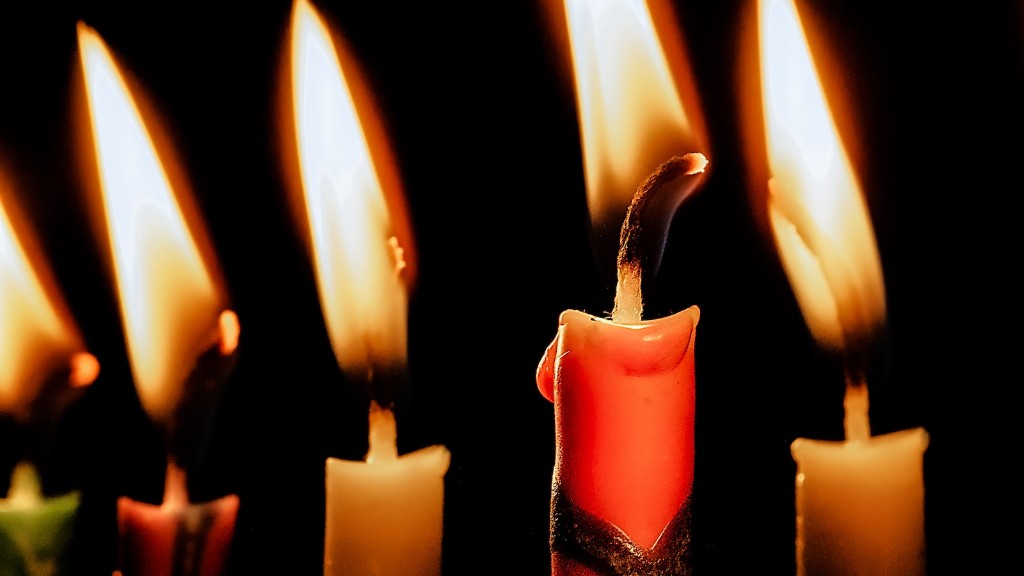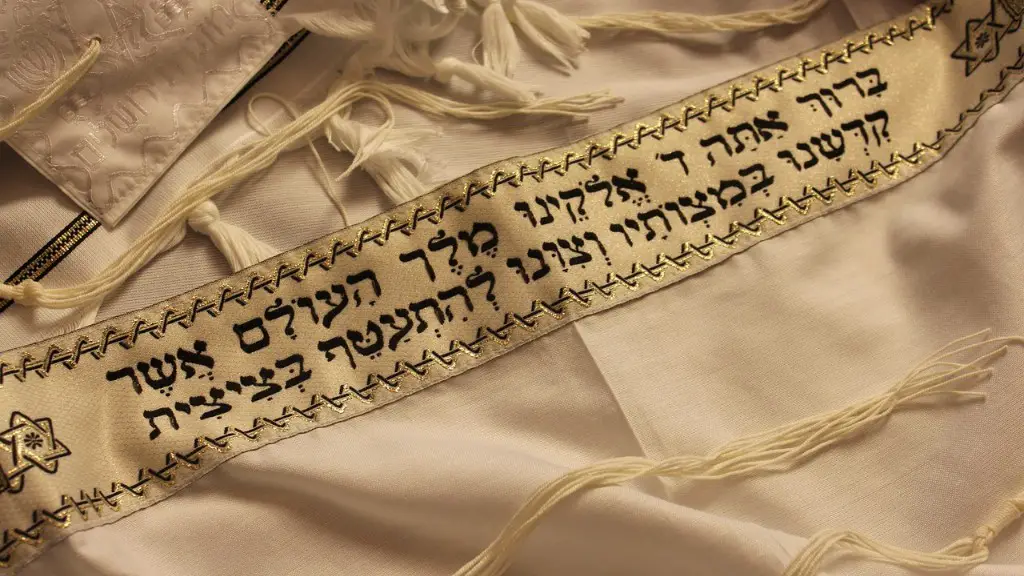The Hamsa is an ancient symbol used in many cultures and religions. It is believed to bring luck and protection, and is often seen as a sign of good fortune. In Judaism, the Hamsa is known as the Hand of Miriam, named after the sister of Moses and Aaron. The Hamsa holds a special place in Jewish tradition as it symbolizes protection against the evil eye and other spiritual ills. The more modern version of the Hamsa, is known as the Hand of Fatima, and is most commonly associated with Islam.
The origins of the Hamsa are unclear, but it is said to have been around for centuries. In the Jewish tradition, the Hamsa is believed to have been given to Moses by God in response to the Ten Commandments. The Hamsa symbolises divine protection, as it is believed to be a reflection of God’s hand. It is often seen as a sign of good fortune, hope, health and long life.
The Hamsa is associated with spiritual protection and keeping away the evil eye. According to some sources, it was believed that the power of the Hamsa could ward off the destructive glare of a malicious stare. It is believed that the Hamsa’s hand-like shape is meant to represent the five fingers of God, who watch over and protect all of His children. The Hamsa is also said to bring good luck, and is often seen as a sign of hope, prosperity and abundance.
The Hamsa is often depicted in art, jewelry and religious symbols. In the modern age, the Hamsa has become a popular symbol of hope and protection. It is often worn by those who believe in its protective power and it has become an increasingly popular symbol of Jewish identity and pride. Some versions of the Hamsa are also made into jewelry, keychains and charms.
For Jews, the Hamsa is a sign of faith and hope. It is believed to bring luck and protection, and it serves as a reminder that God watches over us and will protect us from evil. This symbol is meaningful to many, as it serves as a reminder of the beauty and power of faith, and provides a reminder of the importance of relying on God for strength and protection.
The Hamsa is an important symbol in many cultures and religions. It has been used for centuries as an expression of protection, good luck, hope and faith. In Judaism, the Hamsa is a symbol of divine protection, and is believed to ward off the evil eye and bring good fortune to its wearer. For those who wish to maintain their Jewish identity and pride, the Hamsa is an important symbol to keep close by.
Symbology of the Hamsa
The Hamsa is a symbol with a long and rich history in many religions and cultures. In Judaism, the Hamsa is seen as the Hand of Miriam, which is named after the sister of Moses and Aaron. This symbol is believed to bring luck and protection, and is often seen as a sign of good fortune. In addition to its spiritual connotations, the Hamsa is also often seen as a sign of hope, health and long life.
The power of the Hamsa is said to come from its symbolism, which is believed to reflect the five fingers of God, who watches over and protects all of His children. Many believe that the Hamsa’s hand-like shape is meant to represent the strength and protection of God, as well as the power to ward off the destructive glare of a malicious stare.
The Hamsa is an important symbol that transcends different cultures and religious beliefs. In Judaism, the Hamsa is a powerful symbol of faith, hope and protection. It serves as a reminder that God is watching over us and will protect us from evil and misfortune. For those who wish to maintain their Jewish identity, the Hamsa is seen as a symbol of faith, hope and pride.
Hamsa as a Unique Form of Expression
The Hamsa is often seen in art and religious symbols and has become increasingly popular in modern times. The Hamsa is often worn as a sign of protection and luck, and has become a popular symbol of prayer and faith. The Hamsa is often seen as a unique form of expression, as it does not represent a specific religion or culture, but instead serves as a powerful symbol of faith and strength.
Furthermore, the Hamsa is often seen as a creative form of expression, as it is interpreted differently by different cultures and religions. For example, in some cultures the Hamsa is seen as a sign of hope, while in others it is seen as a sign of protection. As a result, the Hamsa can be seen as a symbol of unity and tolerance, as it transcends cultures and religions.
The Hamsa is also used in a variety of art forms and symbols. From jewelry to keychains and charms, the Hamsa is often used to represent faith and hope, as well as protection against the evil eye and other spiritual ills. The Hamsa is often seen as a symbol of good fortune, abundance and prosperity.
In conclusion, the Hamsa is a symbol with a long and powerful history in many cultures and religions. It is often seen as a unique form of expression, as its meaning is different in each culture and religion. The Hamsa is associated with spiritual protection, and is believed to ward off the destructive glare of a malicious stare. For those who wish to maintain their Jewish identity, the Hamsa is an important symbol of faith, hope and protection.
Hamsa as a Sign of Faith and Hope
The Hamsa is an important symbol of faith and hope in Judaism, as it is seen as a sign of divine protection from evil and misfortune. In the Jewish tradition, the Hamsa is believed to have been given to Moses by God in response to the Ten Commandments. This symbol is seen as a reminder that God is watching over us and will protect us from evil and bad luck.
The Hamsa is often seen as a form of creative expression, and its meaning is interpreted differently in each culture and religion. It is often seen as a sign of hope, abundance and prosperity, as well as protection against the evil eye and other spiritual ills. In modern times, the Hamsa has become increasingly popular as a symbol of Jewish identity and pride.
The power of the Hamsa is said to come from its symbolism, which is said to reflect the five fingers of God, who watches over and protects all of his children. As a result, it has become an important symbol of faith and hope, and it serves as a reminder of the power of faith and the importance of relying on God for strength and protection.
The Hamsa is an important symbol in many cultures and religions, and it has been used for centuries as an expression of protection, good luck, hope and faith. In Judaism, the Hamsa is seen as a sign of divine protection, and is believed to bring luck, hope and abundance to its wearer. For those who wish to maintain their Jewish identity and pride, the Hamsa is an important symbol to keep close by.
Hamsa as a Symbol of Jewish Identity and Pride
The Hamsa is an important symbol of Jewish identity and pride, as it is believed to bring luck and protection, and it serves as a reminder of faith, hope and God’s protection. The Hamsa is often worn as a sign of protection and luck, as well as a symbol of faith and hope, and it has become increasingly popular in modern times.
The Hamsa is often seen as a sign of hope, health and long life, and it is believed to bring good luck and protection against the evil eye and other spiritual ills. Furthermore, in the modern age, the Hamsa has become a popular symbol of Jewish identity and pride. For those who wish to maintain their Jewish identity and faith, the Hamsa is an important symbol to keep close by.
In conclusion, the Hamsa is an important symbol that transcends different cultures and religions. It has been used for centuries as an expression of protection, good luck, hope and faith. In Judaism, the Hamsa is a powerful symbol of faith, hope and protection. It is believed to bring luck and protection, and to ward off the evil eye and bring good fortune to its wearer. As a result, for those who wish to maintain their Jewish identity, the Hamsa is a powerful symbol of faith, hope and pride.


